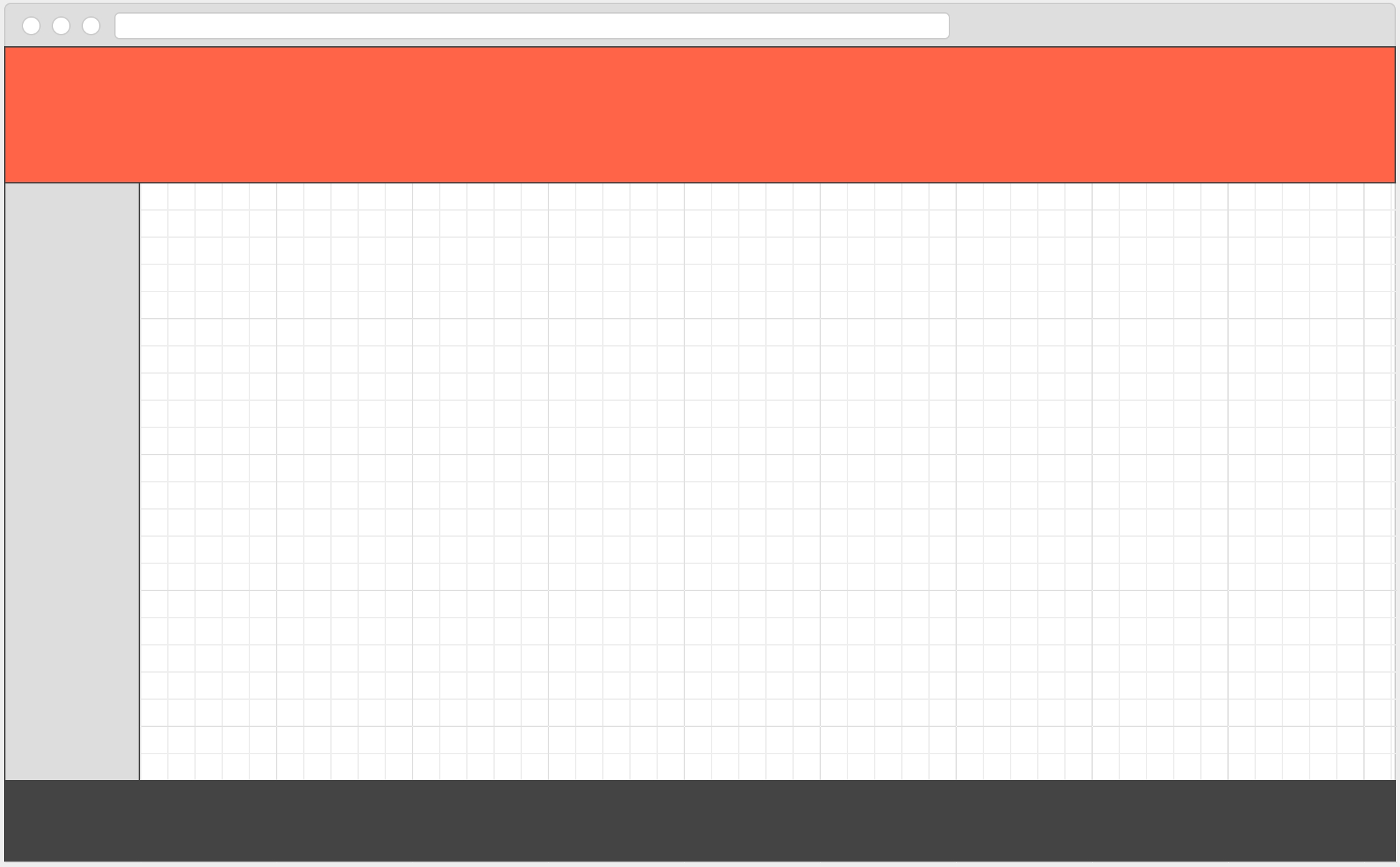Grid
Learning Objectives
Explain the use cases for Grid.
Understand and use CSS Grid syntax.
Use CSS Grid to create a page layout.
What is CSS Grid Layout?
From the www.w3.org website...
"Grid Layout is a new layout model for CSS that has powerful abilities to control the sizing and positioning of boxes and their contents. Unlike Flexible Box Layout, which is single-axis–oriented, Grid Layout is optimized for 2-dimensional layouts: those in which alignment of content is desired in both dimensions."
With Grid layout, you can divide up the screen into rows and columns of sizes of your choosing, and then specify how many rows and columns each cell takes up. Sizings can be fixed, or dynamic, allowing you to create modern looking, versatile websites.
Example of flexbox layout

example of grid layout

Notice how the grid layout allows the cell on the right to take up multiple rows.
All the pieces of a Grid
When you look at a grid you see that it has grid rows and grid columns. Inside these rows and columns are grid cells. Grid tracks are one or more cells in a line in one rown or column. Easy, right?
The next concept is grid areas. Any group of adjacent grid cells can be sectioned into a grid area. We have the ability to give these areas names like we give our variables and link them through styles to our HTML containers.
What we'll be making
We will implement this basic web page template:

The code for the Grid
We start with defining a container by setting the display property to grid. Since we are making a whole page layout we will use the body as our container:
All of our rows and columns will be inside this. We'll make it fill the full vertical space of the screen.
Now looking at the layout, if you extend all lines to the outermost container boundary, you will see the structure of the grid. Imagine that the left-center section was the middle part of a column that went from top to bottom. In that structure, the header and footer actually span two columns. We will see how to do that but first we must set up the rows and columns.
Code for the rows and columns
Our layout has 3 rows and 2 columns. We should note that the header and footer have a fixed height and the main fills the remaining space between them. Likewise, the aside will have a fixed width and the main will fill the rest of the space to the right.
First, we'll define the rows and columns:
The fr is a fractional unit and saying 1fr results in that area in the grid taking up 100% of the remaining space.
Linking HTML containers to Grid Areas
We have our header, aside, main, and footer and each will be mapped to one grid area. Here is how we do that:
We do not put quotes around these identifiers.
Laying out the Grid Areas
We can now add the CSS to layout our grid areas in the grid. There are a couple different ways of doing this but the way I like the most is using the grid-template-areas property because it gives you a nice way of visualizing your areas on top of the grid. Observe:
That looks truly bizarre, doesn't it? The syntax is definitely bizarre but it is perfectly legal and allows us to visually represent our grid in code. Rows are represented by each of those strings and columns are shown inside the row strings separated by spaces. Finish it off with a semicolon.
Getting a little Flexy with Grid
Grid itself can do some of the same vertical and horizontal spacing stuff that Flexbox can do. It uses the properties justify-items and align-items. But it is important to realize that it is only the thing marked with display: grid that has these abilities. The grid areas do not implcitly have any of that so if you need flex functionality in any of your grid areas, it's best to mark them as display: flex or display: grid and then apply your justification to the items therein.
Resources
Screencasts
Last updated
Was this helpful?